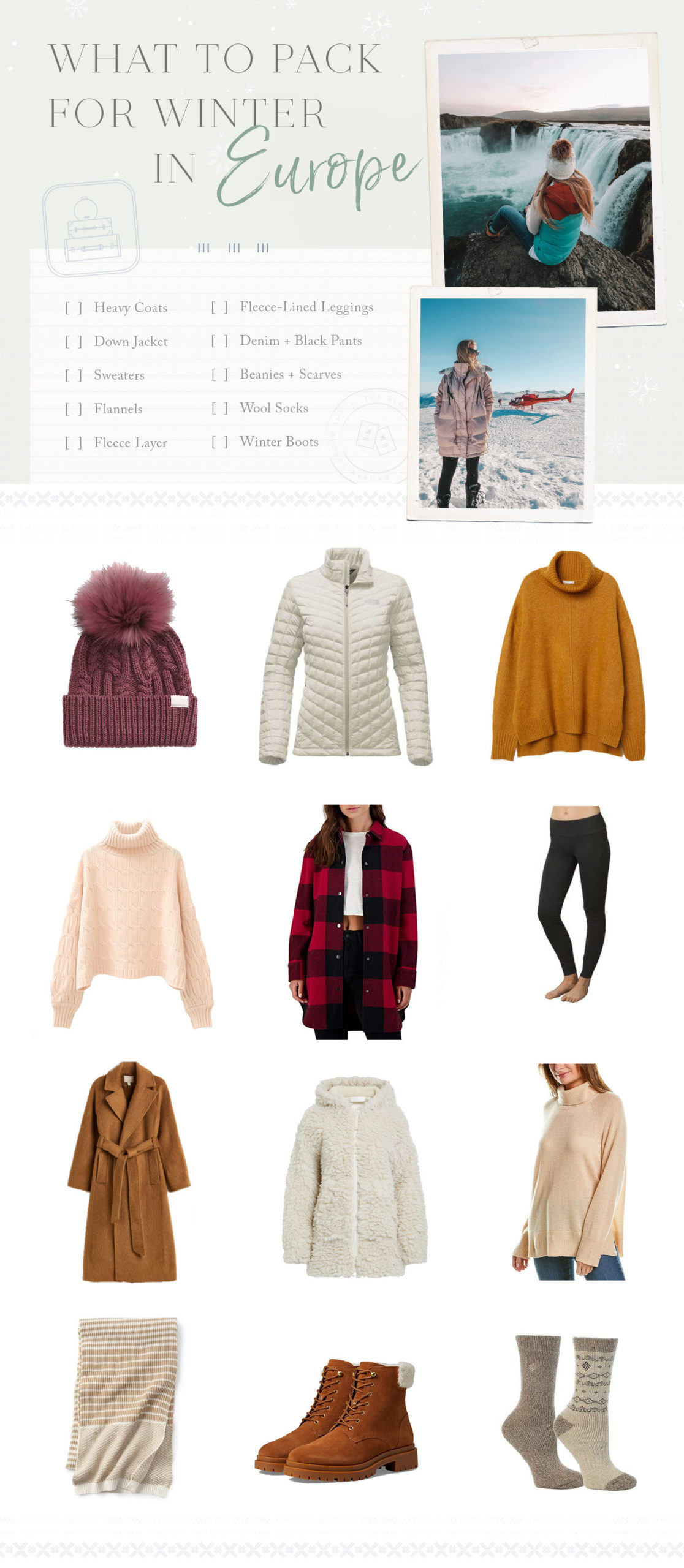Planning a winter trip to Europe? It can be an enchanting experience filled with snow-covered landscapes, festive holiday markets, and the charm of winter romance. However, dressing appropriately for the cold is essential. In this detailed guide, we will explore everything you need to know about winter travel clothes for Europe, helping you to stay warm, comfortable, and stylish during your adventures.
Understanding the European Winter Climate
Winter in Europe can vary significantly from country to country, so understanding the local climate is key to packing efficiently. For instance:
- Northern Europe: Countries like Sweden and Finland experience very cold winters, often with heavy snowfall.
- Western Europe: Cities like London and Paris enjoy milder winters, but it can still get chilly and rainy.
- Southern Europe: Locations such as Spain and Italy are generally milder, but evenings can get very cold.
Essential Winter Travel Clothes
1. Base Layers
Base layers are your first line of defense against the cold. They wick moisture away from your skin and help regulate your body temperature.
Recommended Fabrics:
- Merino Wool
- Polyester
- Silk
Top Picks:
| Brand | Type | Material | Rating | Price |
|---|---|---|---|---|
| Icebreaker | Men’s Merino Wool Base Layer | Merino Wool | 4.8/5 | $100 |
| Patagonia | Women’s Capilene Base Layer | Polyester | 4.7/5 | $79 |
2. Insulating Layers
Insulating layers trap heat and keep you warm. Fleece jackets, down vests, and thicker sweaters work wonderfully in layering.
Top Picks:
| Brand | Type | Material | Rating | Price |
|---|---|---|---|---|
| The North Face | Men’s ThermoBall Jacket | Synthetic Insulation | 4.6/5 | $199 |
| Columbia | Women’s Mighty Lite Hooded Jacket | Synthetic Insulation | 4.5/5 | $130 |
3. Outer Layers
Finally, your outer layer is crucial in protecting you from wind, rain, and snow. A good winter coat is essential.
Top Picks:
| Brand | Type | Material | Rating | Price |
|---|---|---|---|---|
| Patagonia | Men’s Frozen Range Parka | GORE-TEX | 4.8/5 | $599 |
| Arc’teryx | Women’s Camosun Parka | GORE-TEX | 4.7/5 | $600 |
4. Accessories
Accessories can make or break your winter outfit. Be sure to include:
- Warm gloves or mittens
- A cozy hat
- Scarves for extra warmth
- Thermal socks

Destination Highlights: What to Wear Where
Winter in Paris
Even though it may not be freezing, Paris can be quite chilly in winter. Opt for stylish yet warm clothing. A fashionable coat paired with a warm scarf can keep you looking chic while you explore the city’s beautiful streets.
Winter in Stockholm
Stockholm experiences long, harsh winters. You’ll need a durable, insulated jacket, thermal layers, and waterproof boots to enjoy the charming Christmas markets without feeling the bite of the cold.

Winter in Rome
Rome’s winter is milder, but be prepared for a mix of rain and chilly evenings. Layering is key; a light jacket over a heavier sweater will work well.
Travel Tips for Packing Winter Clothes
1. Choose Versatile Colors
When packing, opt for a color palette that mixes and matches easily. Neutral colors work best.

2. Layer Smartly
Layering is crucial. Not only does it keep you warm, but it also allows you to adjust your outfit based on changes in temperature.
3. Invest in Quality Footwear
Comfortable, insulated, and waterproof boots are essential for walking around European cities.

4. Utilize Packing Cubes
Packing cubes can help you organize your layers efficiently, making it easier to find what you need on the go.
Pros and Cons of Winter Travel in Europe
Pros
- Less crowded tourist attractions
- Beautiful winter scenery
- Unique winter festivals and events
- Lower travel costs

Cons
- Cold and potentially harsh weather
- Shorter daylight hours
- Some attractions may be closed
FAQs About Winter Travel Clothes for Europe
1. What materials are best for winter travel clothes?
Merino wool, synthetic insulation, and moisture-wicking fabrics like polyester are the best choices for base layers. For outer layers, look for waterproof materials like GORE-TEX.

2. How many layers should I wear in winter?
A three-layer system is ideal: a moisture-wicking base layer, an insulating middle layer, and a waterproof outer layer.
3. Can I wear regular clothes in winter?
While you can wear regular clothes, they may not provide the warmth and comfort needed in cold climates. It’s best to invest in at least a few quality winter-specific clothing items.

4. How do I keep my feet warm while traveling?
Wear thermal socks and invest in insulated, waterproof footwear to keep your feet warm and dry during winter excursions.